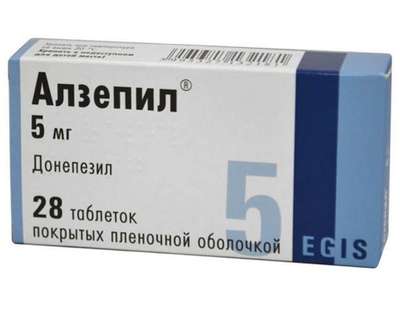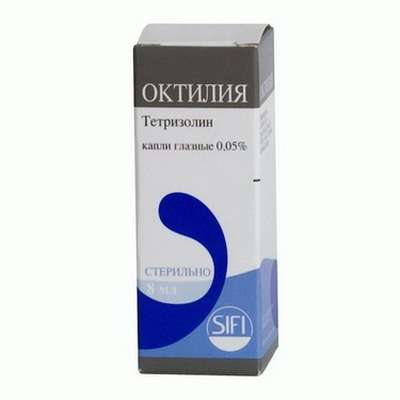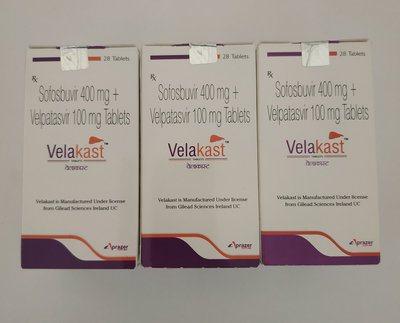Instruction for use: Tolterodine (Tolterodinum)
I want this, give me price
chemical name
(+) - (R) -2- [α- [2- (Diisopropylamino) ethyl] benzyl] -para- cresol
Pharmacological group
M Cholinolytics
The nosological classification (ICD-10)
N31.1 Reflex neuropathic bladder, not elsewhere classified
hyperreflexia, Overactive Bladder, detrusor hyperreflexia, detrusor hyperreflexia
Code CAS 124937-51-5
Characteristics of substance Tolterodin
Tolterodine tartrate is a white crystalline powder. The value of pKa is 9.87; Solubility in water - 12 mg / ml; Soluble in methanol, slightly soluble in ethanol, practically insoluble in toluene. The octanol / water partition coefficient at pH 7.3 is 1.83.
Pharmacology
Pharmacological action - spasmolytic, holinoliticheskoe.
Competitive antagonist of m-holinoretseptorov, localized in the bladder and salivary glands. Tolterodine and its active 5-hydroxymethyl metabolite are highly specific for muscarinic receptors and do not affect other receptors; Have selectivity for receptors of the bladder (in comparison with receptors of salivary glands).
Reduces contractile activity of the bladder, and also reduces salivation. Decreases detrusor pressure, suppresses involuntary urination, increases the interval between urination, increases the volume of urine output, contributes to the disappearance or weakening of imperative urges. Therapeutic effect is achieved after 4 weeks.
Carcinogenicity, mutagenicity, effects on fertility
There was no increase in the risk of tumors in mice and rats when doses of tolterodine were used, 9-14 times higher than the MPD. There were no mutagenic effects of tolterodine in a number of tests, including the Ames test (using Salmonella typhimurium strains and two strains of Escherichia coli), a test for gene mutations in mouse lymphoma cells, a test for chromosomal aberrations using human lymphocytes, a micronuclear test on bone marrow cells of mice .
With the introduction of tolterodine in mice at a dose of 20 mg / kg / day for 2 weeks before mating (systemic exposure in animals is 15 times higher than in humans when recalculated for AUC), no effect on fertility and reproductive activity was noted. Introduction to male mice doses of tolterodine 30 mg / kg / day did not lead to impaired fertility.
In dogs, the QT interval was prolonged at high concentrations of tolterodine or its main metabolite (50-100 times higher than the therapeutic level). Clinical observations showed no prolongation of the QT interval in a large representative sample of patients when administered at the recommended doses.
After oral intake is rapidly adsorbed, Tmax is usually 1-3 hours. Cmax increases in proportion to the dose in the dose range from 1 to 4 mg. Bioavailability is 65% in people with CYP2D6 deficiency and 17% in most patients. Extensively metabolized, mainly with the participation of the isoenzyme CYP2D6 of the liver, to form a pharmacologically active 5-hydroxymethyl metabolite, which is then metabolized to 5-carboxylic acid and N-dealkylated 5-carboxylic acid. Systemic clearance is about 30 l / h, T1 / 2 is 2-3 h. T 1/2 of 5-hydroxymethyl metabolite is 3-4 h.
In people with reduced metabolism (in the case of a deficiency of CYP2D6 - this subpopulation is also called "weak metabolizans", they constitute approximately 7% of the population, in contrast to another one called "extensive metabolizing"), tolterodine undergoes dealkylation with the participation of the CYP3A4 isoenzyme, resulting in a pharmacologically inactive N-dealkylated tolterodine. The decrease in clearance and lengthening of T1 / 2 (about 10 h) in people with a decreased metabolism leads to an increase in the concentration of tolterodine (about 7 times). 96.3% of tolterodine (predominantly with acid alpha-1 glycoprotein) and 64% of 5-hydroxymethyl metabolite bind to plasma proteins. Since the binding of tolterodine and its active metabolite with proteins is different, total free serum concentrations in equilibrium are similar for extensive and weak metabolizing agents. The volume of distribution is (113 ± 26.7) l (with iv injection at a dose of 1.28 mg). Excreted in urine (77%) and with faeces (17%). Less than 1% is excreted unchanged, 5-14% - in the form of a 5-hydroxymethyl metabolite. When the isoenzyme CYP2D6 is deficient, less than 2.5% is released unchanged, and less than 1% is released as a 5-hydroxymethyl metabolite.
Indications
Hyperactivity of the bladder, manifested by frequent imperative urges to urinate or urinary incontinence.
Contraindications
Hypersensitivity, delayed urination, untreatable myasthenia gravis, angle-closure glaucoma, severe ulcerative colitis, megacolon.
Restrictions on the use
Significant obstruction of urinary tract outflow with risk of urinary retention, obstructive gastrointestinal lesion (eg stenosis of the doorkeeper), renal or hepatic insufficiency, neuropathy, unrecoverable hernia, children's age (safety and efficacy in children not defined).
pregnancy and lactation
Studies in mice showed that when administered to pregnant females, oral doses of tolterodine 20 mg / kg / day, anomalies or malformations were not noted. High doses (30-40 mg / kg / day - about 20-25 times higher than the dose for a person, in terms of AUC) cause embryo, a decrease in the body weight of the embryos, increase the frequency of embryonic deformities (wolf mouth, finger abnormalities, intra-abdominal hemorrhages, Anomalies of the skeleton of bone, primary reduction of ossification).
In pregnant rabbits who received p / tolterodine at a dose of 0.8 mg / kg / day, there was no embryotoxicity and teratogenicity.
When pregnancy is possible, if the potential benefit to the mother exceeds the possible risk to the fetus (adequate and strictly controlled studies in pregnant women are not carried out).
The action category for fetus by FDA is C.
Tolterodin is excreted into the milk of mice. The introduction of tolterodine at a dose of 20 mg / kg / day to mice during lactation resulted in a slight decrease in the weight gain in the offspring, but the weight was restored in the maturation phase.
At the time of treatment, breastfeeding should be discontinued (there are no data on the excretion of tolterodine with breast milk of women).
Side effects
From the side of the nervous system and sensory organs: visual impairment (including violation of accommodation) - 4.7%, dizziness - 8.6%, headache - 11%, xerophthalmia - 3.8%, drowsiness - 3% Fatigue rate is 6.8%.
From the side of the cardiovascular system: arterial hypertension (dizziness) - 1.5%.
On the part of the digestive system: dry mouth - 39.5%, indigestion - 5.9%, nausea - 4.2%, constipation - 6.5% or diarrhea - 4%, abdominal pain - 7.6%, flatulence - 1.3%.
On the part of the genitourinary system: urinary tract infections (difficulty, painful urination, imperative urges, leukocyturia, hematuria) - 5.5%, dysuria - 2.5%.
Other: flu-like symptoms (including joint pain) - 4,4%; Allergic reactions - <1%. When taken in the form of tablets: dry skin, bronchitis, weight gain - 1-10%, chest pain - 3.4%. When taken in the form of capsules prolonged action: sinusitis - 1-10%.
Interaction
When combined with anticholinergics, the therapeutic effect of tolterodine is increased and the risk of side effects is increased. Agonists muscarinic cholinergic receptors reduce the effect of tolterodine. Tolterodin reduces the effect of prokinetics (metoclopramide, cisapride). Possible pharmacokinetic interaction with drugs metabolized by isoenzymes of cytochrome P450-CYP2D6 or CYP3A4 (inducers / inhibitors). Co-administration with fluoxetine (a strong inhibitor of CYP2D6, which is metabolized to norfluoxetine, an inhibitor of CYP3A4) leads to a significant inhibition of metabolism of tolterodine in extensive metabolosans (increase in tolterodine AUC 4.8 times, decrease in Cmax and AUC of the active 5-hydroxymethyl metabolite by 52 and 20 %, Respectively, while the total concentration of unbound fraction of tolterodine and 5-hydroxy metabolite is increased by 25%), however, a change in the dosage regimen is not required. Simultaneous administration of tolterodine with strong inhibitors of CYP3A4, such as macrolide antibiotics (erythromycin, clarithromycin) or antifungal agents (ketoconazole, itraconazole, miconazole) should be avoided. There is no interaction with warfarin and combined oral contraceptives containing ethinylestradiol / levonorgestrel.
Overdose
Symptoms: hallucinations, severe agitation, convulsions, respiratory failure, tachycardia, mydriasis, paresis of accommodation, delayed urination, painful urge to urinate.
Treatment: gastric lavage, reception of activated charcoal, symptomatic therapy. If urinary retention is delayed, the bladder is catheterized. With strong central anticholinergic effects - physostigmine, with convulsions or pronounced excitation shows benzodiazepines (diazepam, lorazepam); With developed respiratory failure - IVL. It is necessary to conduct ECG monitoring in connection with the possible extension of the QT interval. When tachycardia - beta-blockers. With mydriasis, eye drops with pilocarpine and / or transfer of the patient to a dark room.
Routes of administration
Inside.
Precautions
Before the beginning of treatment it is necessary to exclude organic causes of frequent and imperative urge to urinate.
Women of reproductive age should be prescribed only if reliable contraception is used. It is necessary to consult a dentist if the dryness in the oral cavity persists for more than two weeks.
Do not use during work drivers of vehicles and people whose profession is associated with increased concentration of attention.

 Cart
Cart





